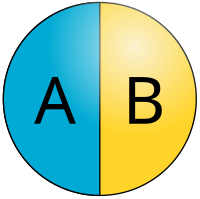
Photo from wikipedia
In this work, the plasmon drag effect in the grating gated graphene with symmetric unit cell, the plasmon ratchet effect and the photo-thermoelectric effect in the grating gated graphene with… Click to show full abstract
In this work, the plasmon drag effect in the grating gated graphene with symmetric unit cell, the plasmon ratchet effect and the photo-thermoelectric effect in the grating gated graphene with asymmetric unit cell are studied. The correlation between the total responsivity of the plasmon drag effect and the source-drain bias is calculated numerically through the hydrodynamic approach under small source-drain bias approximation. The total responsivity of the plasmon drag effect under small source-drain bias is found to be much smaller than the responsivity of the unidirectional travelling plasmons. The responsivity of the plasmon ratchet effect is calculated by fixing the lengths of the longer gated region and ungated region and changing the lengths of the shorter gated region and ungated region. The results show that non-zero plasmon ratchet responsivity can be obtained by only assuming one kind of charge carrier in the whole channel. By assuming holes in the shorter gated region and electrons in the other regions, the maximum responsivity is much higher than the former and can be as high as that reported in the reference. The responsivity of the photo-thermoelectric effect can be higher than that of the plasmon ratchet effect for currently available graphene. For ideal graphene with ultrahigh mobility, however, the responsivity of the photo-thermoelectric effect is orders of magnitude smaller than that of the plasmon ratchet effect.
Journal Title: Journal of Physics D: Applied Physics
Year Published: 2018
Link to full text (if available)
Share on Social Media: Sign Up to like & get
recommendations!